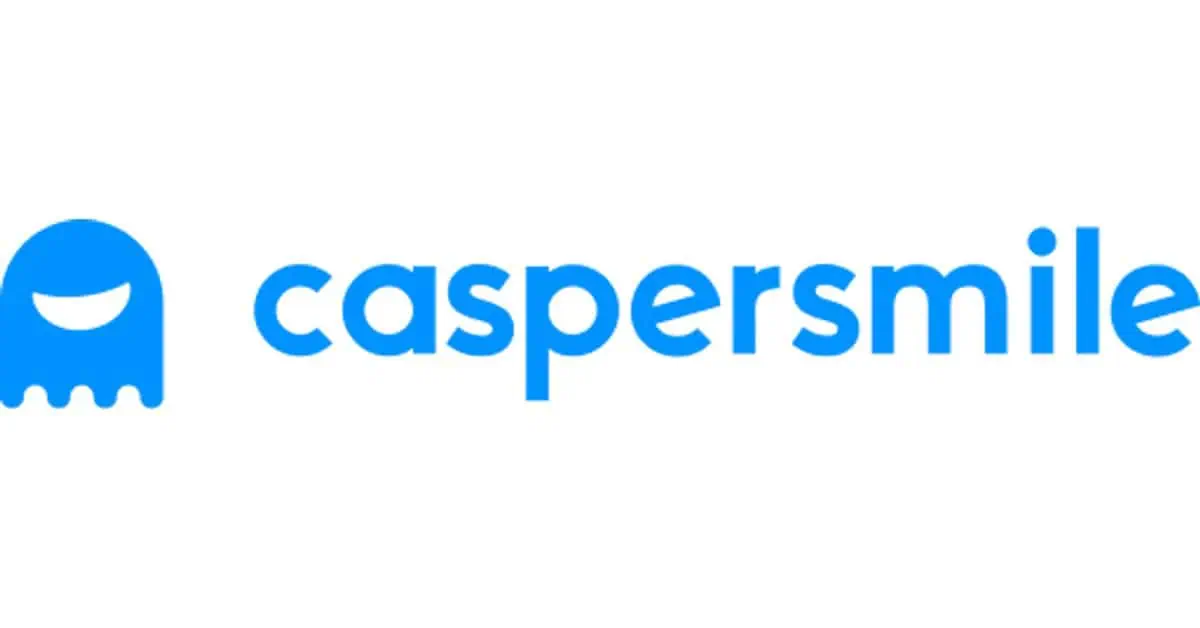‘Malocclusion‘ is a term that dentists and orthodontists used to refer to a misaligned bite. In other words, one or more crooked teeth prevent the upper and lower teeth from coming together in a normal position.
This can lead to:
- Self-consciousness about the appearance of the teeth
- Difficulty chewing and eating
- Problems maintaining good dental health
- Extra pressure on certain teeth and muscles, causing strains or breakages
Fortunately, there are various malocclusion treatments that can realign wonky teeth into a healthier position. In this article, you’ll find information about the types of malocclusion, what causes crooked teeth, and how to fix crooked teeth with dental braces, veneers, or other treatments.
If you’re considering clear aligners for at-home treatment, here are the brands we recommend:
- Up to 80% cheaper than Invisalign
- Buy now, pay later in interest-free instalments.
- Rated 4.5/5 on Trustpilot
- Starting at just 625 for single-arch treatment!
Caspersmile offers a convenient at-home solution for teeth straightening with their clear aligners. You can achieve a perfect smile in 3-5 months, wearing the aligners for 22 hours a day.
Caspersmile’s treatment is overseen by UK-licensed dentists, ensuring professional guidance throughout the process. The treatment starts with an at-home impression kit or a visit to a scan center, followed by a 3D preview of your future smile.
Every treatment comes with free teeth whitening, so you can brighten your smile while you straighten it!
- Hybrid in-office and remote treatment
- In-person visits with your orthodontist for safe, effective treatment
- Treats even complex cases of misalignment
- Various pricing options
Discover the flexibility and effectiveness of Impress Invisible Braces, the hybrid orthodontic solution that blends in-person care with the convenience of remote appointments. Suitable for both kids and adults, Impress offers a range of treatment options designed to cater to various needs, from mild to severe cases of misalignment. With the initial consultation happening in person, you’re assured of a tailored treatment plan that can address even the most complex orthodontic issues.
Impress Treatment Plans:
- Impress Super Light ($6,999): Perfect for mild cases, this plan promises results in up to 3 months, making it the quickest route to a better smile.
- Impress ($4,599): Designed for moderate cases, this option aims to perfect your smile within 4-10 months.
- Impress Plus ($5,599): Tailored for moderate cases requiring a bit more time, this plan spans 11-14 months.
- Impress Advanced ($6,999): The go-to choice for complex cases, offering comprehensive treatment over 11-24 months.
- Teens ($4,599): Specifically designed for teenagers, this plan addresses mild cases within 4-10 months, ensuring a confident smile during those crucial years.
- Impress Kids ($4,599): Offering orthodontic treatment for children, this plan covers a period between 8-18 months, setting the foundation for a lifetime of healthy smiles.
With flexible payment plans available, starting your journey to a perfect smile has never been easier or more accessible. Whether you’re looking for a quick fix or need extensive treatment, Impress Invisible Braces provide a tailored solution that meets your needs and budget. Click below to get started!
- Free retainers and whitening
- Nighttime aligners available
- 0% interest finance options
£1,395£1,295 or £83.33/month
NewSmile is a Canadian company that brought its clear aligners to the UK market in 2022. NewSmile aligners are made from the clearest material and the company offers excellent service at the best price.
They don’t have any physical locations, so you’ll need to purchase an aligner kit to get started. One of their Impression Specialists will guide you through the process on a video call when you’re ready.
NewSmile aligners are very affordable, costing just £1,395 (currently discounted to £1,295). But even better, this price includes whitening foam to use in your aligners, plus your first set of retainers!
Choose their daytime package for treatment in 4-6 months, or nighttime aligners for a more discreet treatment that takes 8-10 months. Both options come with 0% interest payment plans available.
What causes crooked teeth?
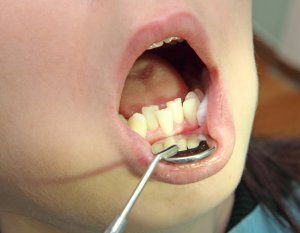
Malocclusion of teeth can occur for a number of reasons. Sometimes it’s down to genetics, but certain behaviours or habits can also cause crooked teeth. Possible causes include:
- Cleft palate or cleft lip
- Problems with jaw development
- Impacted teeth (including wisdom teeth)
- Hyperdontia or hypodontia (having extra teeth or missing teeth)
- Gingivitis (gum disease)
- Prolonged use of a bottle in childhood
- Sucking a thumb or dummy beyond age 3
- Tongue thrusting
- Early loss of baby teeth
Should I worry about crooked baby teeth?
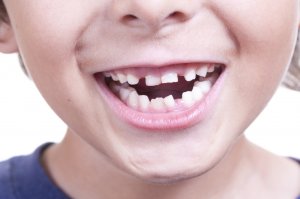
Baby teeth coming in crooked shouldn’t be an immediate cause for concern. There are various factors that can make baby teeth crooked, and it doesn’t necessarily mean that the permanent teeth will follow suit.
However, if baby teeth are growing in crooked because the child has inherited a small jaw from one parent and large teeth from the other, resulting in overcrowding, it’s likely they will need orthodontic work later on. If a child has gaps between their baby teeth, this is usually a good indication that they won’t suffer from overcrowding with their adult teeth.
Crooked teeth are harder to clean than straight teeth, so you’ll need to pay special attention to your child’s oral health.
You should start taking your child to dentist as soon as their first tooth erupts. This not only lets the dentist monitor the growth of their teeth; it also gets the child used to having dental checkups.
Research shows that the crowding of teeth can get worse as we age, just like other age-related changes — wrinkling of the skin and hair turning grey. So you may find that as you grow older, you have crowded teeth when once it wasn’t a problem.
One of the tools orthodontists have to ensure that crowding doesn’t get worse is orthodontic retainers, usually worn after orthodontic treatment with braces. These are often permanent or fixed to the backs of the teeth, so they aren’t visible, but work to keep teeth in line.
Orthodontic treatment can be a significant advance towards enhancing your dental wellbeing. Visit your orthodontist for a consultation if you or your child has crowded teeth.
Dr Yusupov, Amazing Smiles Orthodontics
What to do if permanent teeth are coming in crooked
Don’t panic if your child’s permanent teeth are coming in crooked; they may well straighten themselves out as they find space to grow. However, it’s a good idea to take your child for regular dental checkups. If the dentist thinks your child may need braces, they will refer to you an orthodontist for further assessment.
Our article on braces for kids has more information on how cases are assessed for NHS treatment eligibility according to the IOTN.
Crooked teeth in adults
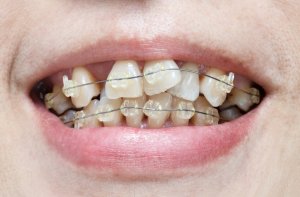
Many adults live their lives with wonky teeth and think nothing of it. Unless your malocclusion is severe enough to affect your eating or speech, or it’s causing you pain of some kind, there may not be any medical need to fix it.
But of course, it’s natural to be self-conscious about a less-than-perfect smile. Teeth can become more crooked over time, and it’s quite common for adults to fix their crooked teeth later in life for purely cosmetic reasons.
Types of dental malocclusion
Malocclusion classes
Orthodontists use the following classifications to define malocclusions:
- Normal occlusion: The upper and lower first molars come together normally.
- Class 1 malocclusion: The upper and lower first molars come together normally but other teeth have some crowding, rotation or other irregularities.
- Class 2 malocclusion: The upper first molar is positioned too far forwards in relation to the lower first molar (resulting in an overbite).
- Class 3 malocclusion: The upper first molar is positioned too far back in relation to the lower first molar (resulting in an underbite).
Don’t worry if these are a bit difficult to understand. There are other ways to categorise malocclusions and crooked teeth using more familiar terms. We have written detailed articles about each of these problems; click through on the links below to read more.
Whatever position your teeth are in right now, would you like to know what they could look like after orthodontic work? Use the SmileView tool to get a free preview in under two minutes!
Underbite
With an underbite, the lower front teeth stick out further than the upper teeth. Around 5-10% of the population have an underbite, and correction is usually recommended.
Read more about underbite treatments.
Overbite/deep bite/overjet
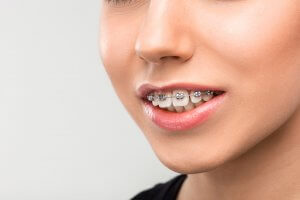
An overbite occurs when the upper front teeth overlap the bottom teeth too far horizontally (a deep bite) or when they stick out too far vertically (an overjet). This is a common dental problem which can usually be corrected with braces.
Read more about overbite treatments.
Crossbite
A crossbite occurs when the upper teeth sit inside the lower teeth. It may affect just one tooth or a whole row of teeth anywhere in the mouth. Surgery may be necessary if the jaw is misaligned.
Read more about crossbite treatments.
Open bite
With an open bite, a gap remains between the upper and lower front teeth while the back teeth make contact when biting. This is usually caused by habits like thumb sucking and tongue thrusting.
Read more about open bite treatments.
Overcrowding
Overcrowding is a common cause of crooked teeth. If there isn’t enough space in the jaw for teeth to erupt in the proper position, they end up rotating or overlapping. This can happen in either jaw, so you may end up with only crooked bottom teeth or crooked top teeth.
It’s sometimes necessary to remove one or more teeth to create enough space in the jaw.
Read more about treatments for overcrowding.
Gaps between teeth
Even if teeth come in perfectly straight, there may be noticeable gaps between them. The technical term for a gap between two teeth is a diastema. It most commonly occurs between the two front top teeth.
Gaps between teeth can affect the aesthetics of a smile, and also make it easier for food to get stuck.
Read more about diastema treatment options.
How to fix crooked teeth
The most common crooked teeth treatment is braces. There are various types of braces for adults and for children, but they all work by gradually shifting the teeth into a better alignment.
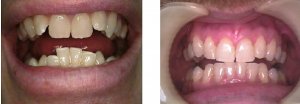
Treatment with braces on crooked teeth usually takes 12-18 months, but more severe cases can take longer. Sometimes it’s necessary to do teeth filing to create more space between teeth or to even up the edges. And some patients will need spacers before braces to make room for the braces themselves to be fitted properly.
If you have slightly crooked teeth, or it’s only your front teeth which need to be straightened, treatment may be quicker and cheaper. Certain brands of braces offer special crooked front teeth solutions designed just for this purpose.
On the other hand, if you have a severe malocclusion because of a misaligned jaw, you may need surgery in addition to braces to straighten your crooked teeth.
How to fix crooked teeth without braces
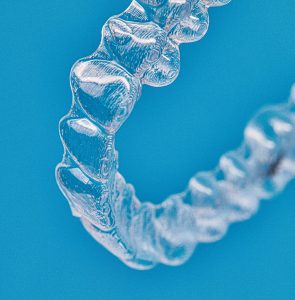
If you’d prefer to avoid having metal braces fixed to your teeth, you might consider treatment with removable aligner braces.
Using this style of brace, which includes the popular Invisalign system, crooked teeth can be shifted into proper alignment without it being obvious you’re undergoing orthodontic work. Many patients, especially adults, appreciate being able to remove their braces for several hours per day, too.
It’s quick and easy to check whether you’re a suitable candidate for treatment with Invisalign clear aligners. Take a free Smile Assessment on their website and submit your details to get an answer in just a couple of minutes.
If you’d prefer to discuss your treatment in person, you can find your nearest Invisalign provider and book an appointment online.
Clear aligners like Invisalign are an increasingly popular alternative to traditional metal braces. There are no brackets or wires and they should require fewer repairs and adjustments during the course of treatment than braces.
The obvious advantages to patients – especially adults – are that they are removable and less noticeable. Those perks also mean aligners are easier to clean and maintain.
Aligners may not be the best teeth-straightening solution for all orthodontic patients, however. Braces are favoured in more complex situations involving severe crowding, impacted teeth, or jaw relationship correction.
Typically, the cost of aligners and braces is comparable. As with all healthcare decisions, it’s important, to begin with a thorough examination and consultation with your orthodontist so that the two of you can come up with a treatment plan that makes the most sense for your individual case.
Dr. Greg Nalchajian, Nalchajian Orthodontics
An alternative to the Invisalign system which is suitable for mild to moderate straightening is Straight My Teeth. These aligners work in much the same way and are just as hard to spot. The big difference is that Straight My Teeth is a ‘remote orthodontics’ company, meaning you do everything from home. Their full treatment costs just £1,199.
You begin by taking your own teeth impressions, then after they have confirmed you are a suitable candidate, they will post your aligners to your home. You change them out as instructed, and in 9-12 months your treatment will be complete. Meanwhile, a dentist or orthodontist monitors your progress using an app.
Not everyone is a suitable candidate for at-home aligners, but you can visit the Straight My Teeth website to take a quick online assessment to check your eligibility. We also have a full review of them here.
Veneers for crooked teeth in adults
Veneers are a cosmetic treatment which can be used in mild cases of misalignment to improve the appearance of the teeth. Rather than changing the position of the teeth, a dentist can place veneers on crooked teeth to make them look straighter.
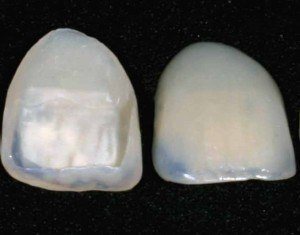
These tooth coverings can be applied directly using composite material or made to measure from porcelain. Composite veneers for crooked teeth cost £100 – £400 per tooth while porcelain veneers cost £400 – £1,000 each. You can read more about this treatment and see images of crooked teeth before and after veneers here.
Bear in mind that you can only use veneers for crooked front teeth, and they aren’t suitable for all malocclusion cases. The original teeth will need to be filed down slightly, meaning you can’t simply remove the veneers when they fail. You’ll need to get new veneers or crowns to cover the teeth again.
Can you fix crooked teeth at home?
You may have heard of or seen people describing ways to fix crooked teeth at home, without seeing a dentist, for example by using elastic bands. Although the cost savings may be appealing, you should always seek treatment from a professional. DIY treatments or fake braces risk doing permanent damage to your teeth. Plus, without a retainer, any results are likely to be temporary.
There is also the option of home teeth straightening kits, like Straight My Teeth, which are like mail-order braces. The clear aligners are similar to Invisalign aligners, but with a dentist checking your progress remotely. You can read more about these and other teeth straightening options in our separate guide.
Summary of malocclusion treatments
The table below shows the possible ways to fix crooked teeth, according to the type of malocclusion. The most suitable treatment for you will depend on a number of factors, so follow your dentist’s advice.
Braces (including invisible aligners)? | Surgery (in severe cases)? | Veneers? | |
Overbite | Yes | Yes | No |
Underbite | Yes | Yes | No |
Crossbite | Yes | Yes | No |
Open bite | Yes | Yes (more likely for adults) | Yes |
Overcrowding | Yes | No | Yes |
Gaps between teeth | Yes | No | Yes |
Conclusion
Whatever type of malocclusion you have, the good news is that you don’t have to live with wonky teeth and all the problems they bring. There are various treatments that can improve your bite, the appearance of your teeth, or both. Options include braces, veneers and surgery, depending on the severity of the misalignment.
You’ll need to visit a dentist for a consultation to discuss your options. If you’re considering invisible braces, search for Invisalign providers near you so you can book an appointment to get a personalised treatment plan. And if you haven’t already, quickly check your eligibility now with Invisalign’s Smile Assessment tool.
SlideShare: Classification of malocclusion. Consulted 3rd August 2023.
British Orthodontic Society: Orthodontics & The NHS. Consulted 3rd August 2023.





